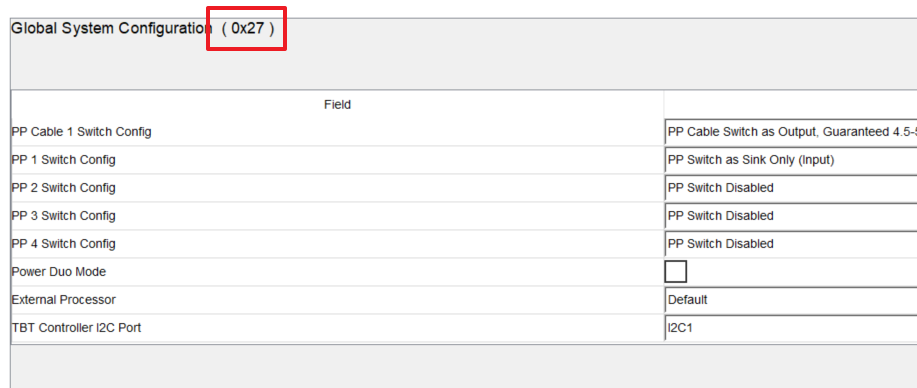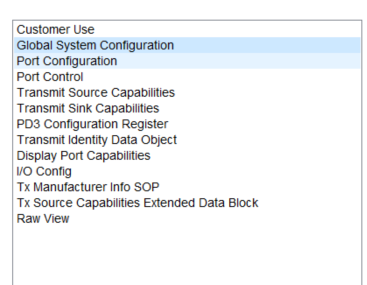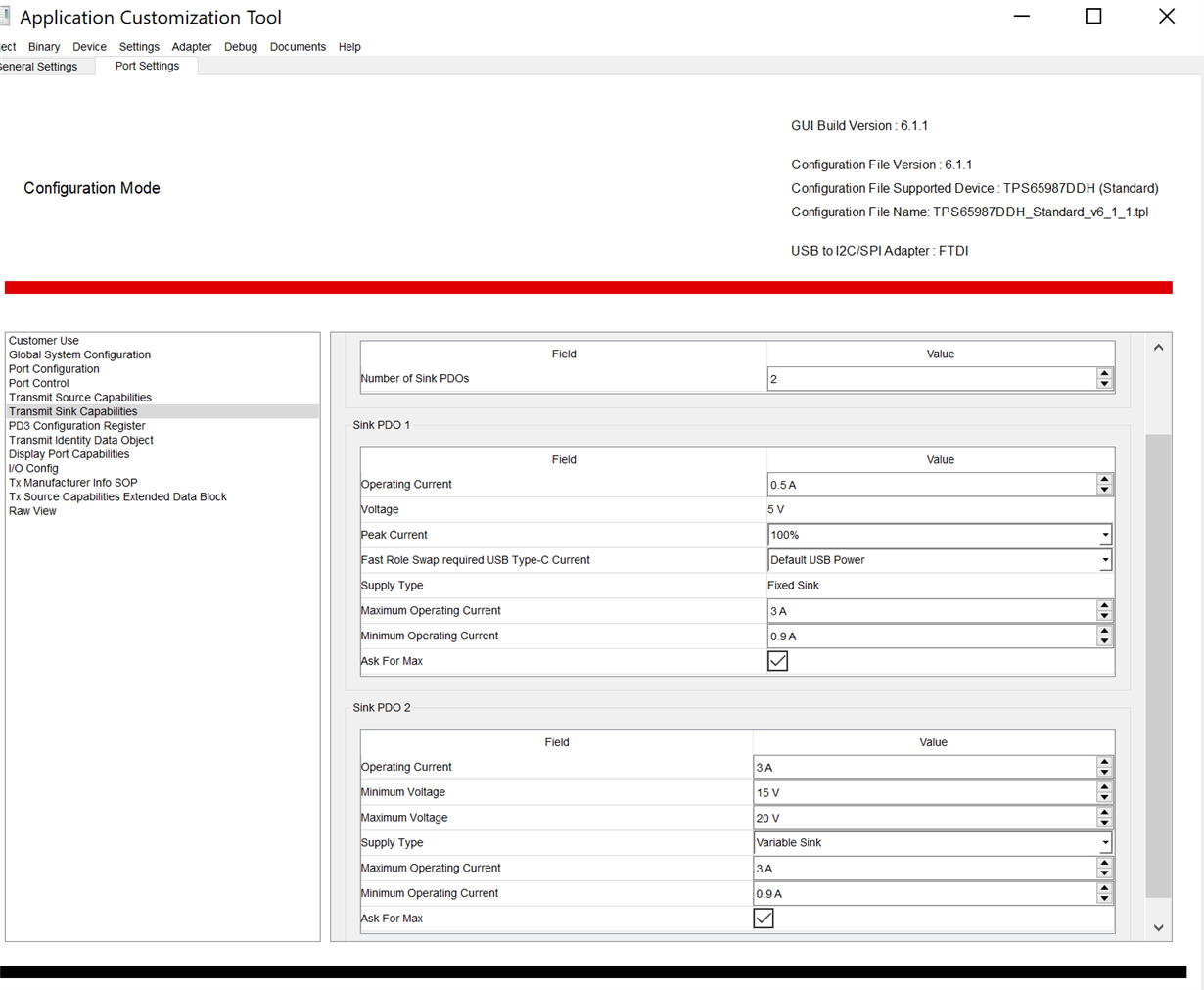Hi Team,
May I know the configuration code of TPS65987D to support below function? Much thanks.
The PD only need to recognize 15V/3A and 20V/3A adapter, that means, only 15V/3A and 20V/3A adapter will close PD_VBUS(PP_HV1) and output power to speaker. If other adapter is presented, such as 12V/9V/5V, don’t close the switch of PD_VBUS(PP_HV1) .
Best Regards.
Wiky




